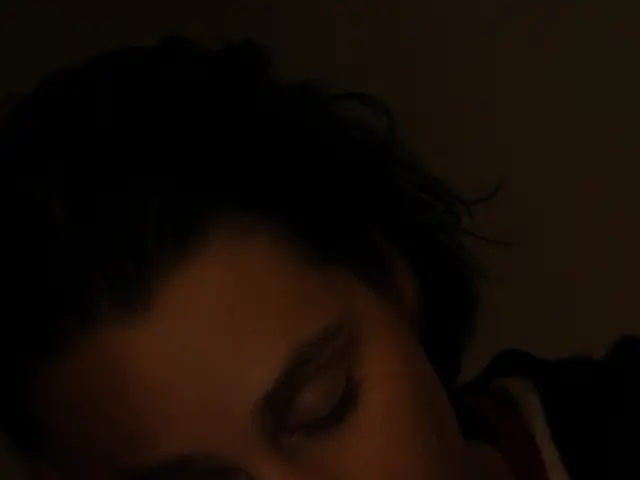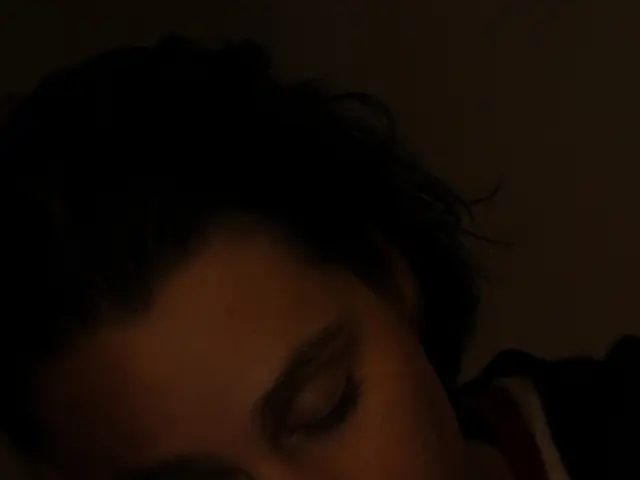Migraine with ophthalmoplegia: Analyzing symptoms, root causes, and treatment methods
Recurrent Painful Ophthalmoplegic Neuropathy (RPON) and Ophthalmoplegic Migraine: Understanding the Difference
Recurrent Painful Ophthalmoplegic Neuropathy (RPON) and ophthalmoplegic migraine are related conditions that share some symptoms but have distinct differences in their pathophysiology.
Recurrent Painful Ophthalmoplegic Neuropathy (RPON) is characterised by recurrent episodes of one or more ocular motor nerve palsies, most often the third cranial nerve, accompanied by a severe migraine-like headache that precedes the ophthalmoplegia by a day or more. The headache is typically intense, unilateral, and occurs on the same side as the ophthalmoplegia. RPON usually affects children under 12 but can present in adults and is marked by repeated attacks that may diminish with age [1].
On the other hand, Ophthalmoplegic migraine was historically considered a subtype of migraine with associated eye muscle paralysis. However, current consensus favours the term RPON because the pathophysiology appears to involve a neuropathic process affecting cranial nerves rather than a typical migraine mechanism alone [1].
The International Classification of Headache Disorders, 3rd Edition (ICHD-3) reclassified ophthalmoplegic migraine as RPON in 2018.
| Feature | Ophthalmoplegic Migraine | Recurrent Painful Ophthalmoplegic Neuropathy (RPON) | |---------------------------------|------------------------------------------------------------|---------------------------------------------------------------------| | Definition | Historically migraine with ophthalmoplegia | Recurrent neuropathy of ocular motor nerves with preceding headache | | Headache Type | Migrainous | Severe, unilateral, migrainous-type headache precedes nerve palsy | | Ophthalmoplegia Duration | Part of migraine episode | Recurrent episodes of cranial nerve palsy, often the 3rd nerve | | Typical Patient Age | Varied | Mainly children under 12, but can occur in adults | | Pathophysiology | Thought to be migraine-related | Considered nerve inflammation or demyelination (neuropathy) | | Recurrence | Possible | Common with multiple episodes over time | | Cranial Nerve Involvement | Usually 3rd nerve, sometimes others | Mostly 3rd nerve, sometimes 4th or 6th nerve |
While both conditions share some symptoms, RPON is now understood to be a neuropathic condition, whereas ophthalmoplegic migraine is largely considered to be RPON.
Some treatment options for managing RPON symptoms include pain medication (such as opioids and NSAIDs), medication to stop muscle spasms, medication to manage nausea, Botox injections, nerve pain medication (such as pregabalin), blood pressure medications (such as beta-blockers), and identifying and avoiding triggers like fatigue and stress.
It can be challenging to tell the difference between migraine with aura and retinal migraine. With retinal migraine, visual symptoms occur in one eye before or during the headache phase of an episode.
The exact treatment for RPON depends on a person's overall health and how they respond to treatment. IV steroids such as prednisone may provide relief for some people with RPON, but not for others.
People should seek emergency medical attention if they experience the worst headache or migraine episode they have ever had, have a headache with other symptoms (such as fever, vision loss, vomiting, confusion, loss of consciousness, and a stiff neck), or have a headache for 72 hours with less than 4 hours free of pain.
It is important for people to understand how migraine and ocular migraine differ from RPON so that they know when to seek medical care. RPON is rare, affecting about one person per year. People should work with their doctor to find the best option for managing RPON symptoms.
[1] Mayo Clinic. (2021). Ophthalmoplegic migraine. Retrieved from https://www.mayoclinic.org/diseases-conditions/ophthalmoplegic-migraine/symptoms-causes/syc-20367956 [1] Headache Classification Committee of the International Headache Society (IHS). (2018). The International Classification of Headache Disorders, 3rd edition (beta version). Cephalalgia, 38(1), 1-211. doi: 10.1177/0333102417739195
- Recurrent Painful Ophthalmoplegic Neuropathy (RPON) and migraines share common symptoms such as headaches, but RPON is characterized by repeated episodes of cranial nerve palsies, particularly the third nerve, while migraines have a different pathophysiology.
- Although ophthalmoplegic migraine was historically considered a subtype of migraine, the International Classification of Headache Disorders, 3rd Edition (ICHD-3) reclassified it as RPON in 2018, recognizing the neuropathic process affecting ocular motor nerves in RPON.
- given the neurological nature of RPON, treatment options may include pain medication, medication to stop muscle spasms, medication to manage nausea, Botox injections, nerve pain medication, blood pressure medications, and identifying and avoiding triggers like fatigue and stress.
- Understanding the differences between migraines, ocular migraines, and RPON is essential for ensuring appropriate medical care, as RPON is a rare medical condition affecting about one person per year and requires specific treatment options, such as IV steroids like prednisone, to manage symptoms effectively.




